Text
Photographic Histories Reflection
From the beginning of this research project I knew that I wanted to investigate and area of history that had significance on my life personally. As the daughter of a Filipino immigrant and having grown up in Manchester for the majority of my life, I felt that I wanted to explore the significance of the city’s Chinatown and find out what historical significance this area has had on the East Asian community associated with it.
My research began by taking a physical trip to the Manchester Museum and looking at their permanent ‘Journeys’ exhibition and seeing what information and materials they had related to the Manchester Chinese Community. While I was able to find a small selection of materials, I didn’t feel that artefacts from almost a hundred years ago were pertaining to my specific area of research. The museum’s website states that appointments can be made to visit their special collections, but from the selection of materials that I saw from the public exhibition I thought that my attention would be better spent elsewhere.
I also went on a visit to the Centre for Chinese Contemporary Art (formerly the Chinese Arts Centre) in Manchester’s Northern Quarter to see if they had any relevant materials. This institution is actually going to be opening up their own archive and library later this year, which I feel is a positive move for the Chinese community to be opening up their own physical archive and taking control of their own history and identity. Unfortunately since it is not yet open I was unable to gain any archival research materials from there, but I was given permission to take photographs of their current exhibits by two young Chinese, UK-based artists. I asked the information desk and somewhat disappointingly neither artist is from Manchester, but it still gave an interesting look at how in modern times, Chinese arts in Manchester seem to be leaning more towards a blended cultural expression of both Mancunian and Chinese identities, signified geographically by the arts centre being in the artsy Northern Quarter rather than its original building in Chinatown.
My next port of call was Manchester Central library, which since its reopening in 2014 has made a large percentage of its archival material available for public viewing, either scanned in on screens or by appointment to view specific materials of its special collections. When I visited the Archives+ section of the museum I was able to find a number of photographs and documents all related to the Chinese community in Manchester. During my visit I was also able to gain access to the BFI North West Film Archives and found several films related to China, and one particularly useful film about Chinese Sunday schools in Manchester that offered a more personal and cultural examination of the community than the Museum materials.
This visit led me to look online and discover that all the photographs I had seen and more were available for viewing online on the library’s Flickr albums, taking advantage of modern technology to make more largely accessible viewing archives. In retrospect I would have liked to take the time to actually physically see some of these materials held at the library but unfortunately due to the limited amount of time I could actually spend in Manchester over the period of my research project I decided that I would work with the digital materials.
With the photos that were available online I attempted to use my analysis skills to break down some of the images and explore what Chinatown was like at the time that the archway was being built (e.g. the amount of shops and restaurants visible and significance of this, trying to decipher by who and for what purpose the photographs were taken). I also saw an opportunity to do some photography of my own and spent a day in Chinatown looking at the old photos and trying to see what the locations they depict correspond with now, and take a modern comparison photograph. This actually proved to be a very useful exercise as I was able to explore not only what Chinatown was like in the past, but also how that compares with the modern day and see how the physical and cultural landscape has changed.
The library also holds the Manchester Chinese Community Archive, which includes the personal archives of community members. These materials are only available by appointment, and is mostly in Chinese script. I was able to discover, however, that many of these materials were the basis for the online archive http://manchesterchinesearchive.org.uk that details personal stories of members of the community, which I was able to access freely and proved very useful in understanding the more personal aspects of immigration and what the experience was like for individuals as the website includes many quotes from interviews with community members.
One research approach that I would have like to have utilised would be conducting first hand interviews with people who immigrated to Manchester during the time period I am investigating. I have on occasion attended services at the Manchester Chinese Church and am close friends with a family who seemed willing to let me interview them, but unfortunately at the time I was in Manchester they were unavailable. This was quite disappointing as it would have really added more depth and understanding of individual experience to my research, but admittedly this could have been avoided if I had organised the interview better or been able to find more interviewees. I would definitely like to develop skills in gathering research first hand with methods like interviews in the future.
This project has definitely been a worthwhile experience of independence. My university career so far has involved working with the textbooks that are available in the university library but doing this research has allowed me to develop my skills with going to and handling archive materials, and finding sources be they physical or digital, and practice how to critically use texts for research purposes. The research that I have conducted did not happen as I had intended it to but I do feel that I have a much richer understanding of the history of Chinatown and the experience of being part of its community.
0 notes
Link
#comm1850#comm1850 research project#photographic histories#manchester#manchester chinatown#chinatown
0 notes
Link
A snippet from a 1985 student film about Sunday schools in Manchester that I was able to watch the entirety of when I visited the archives of Manchester Central Library.
The film emphasies the importance of learning the mother tongue (Chinese) to “re-establish the custom and cultural link and identity with the Chinese half as a community, as a people”
#comm1850#comm1850 research project#photographic histories#manchester#manchester chinatown#chinatown
0 notes
Photo
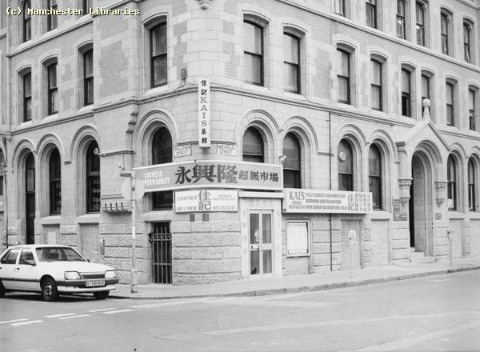





Black and white photos are property of Manchester Archives+
#comm1850#comm1850 research project#photographic histories#manchester#chinatown#manchester chinatown
0 notes
Photo


the recently completed chinatown paifang in 1987, and me posing with it during the 2018 chinese new year weekend
(Left photo belongs to Manchester Archives+)
#comm1850#comm1850 research project#photographic histories#selfie#manchester#chinatown#manchester chinatown
1 note
·
View note
Photo


new and old
Woo Sang Chinese Supermarket on George Street in Manchester, 1970s compared with 2018
(Top photo belongs to Manchester Archives+)
#comm1850#comm1850 research project#photographic histories#manchester#chinatown#manchester chinatown
0 notes
Photo
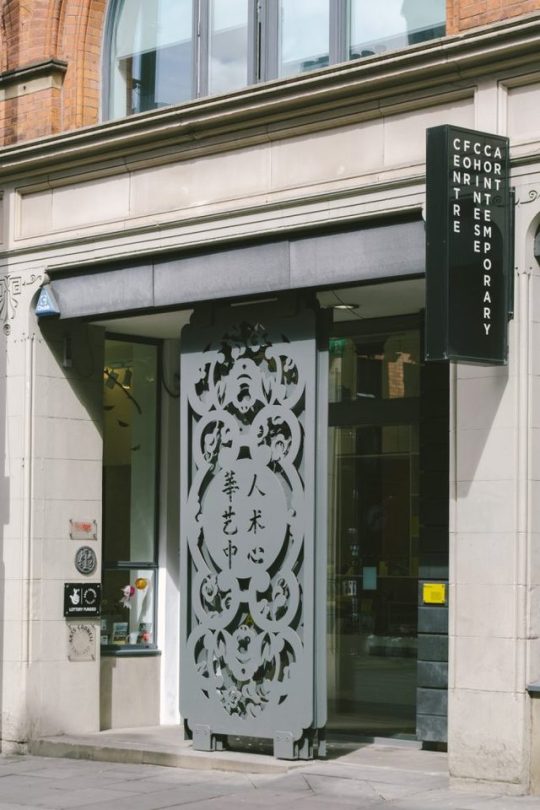
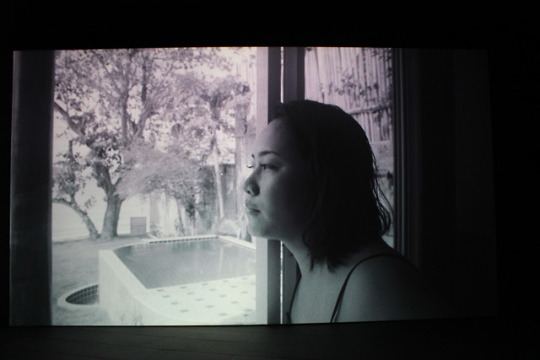

Centre for Chinese Contemporary Art
Shen Xin - Sliced Units
Faye Wei Wei - New Works
This small gallery in the city centre is opening its own library and archive later this year. The idea of a space dedicated to celebrating contemporary Chinese culture within Manchester’s Nothern Quarter, an area known for being home to many creatives and bohemian attitudes, speaks to the celebration of the mixing of cultures within modern culture.
0 notes
Photo
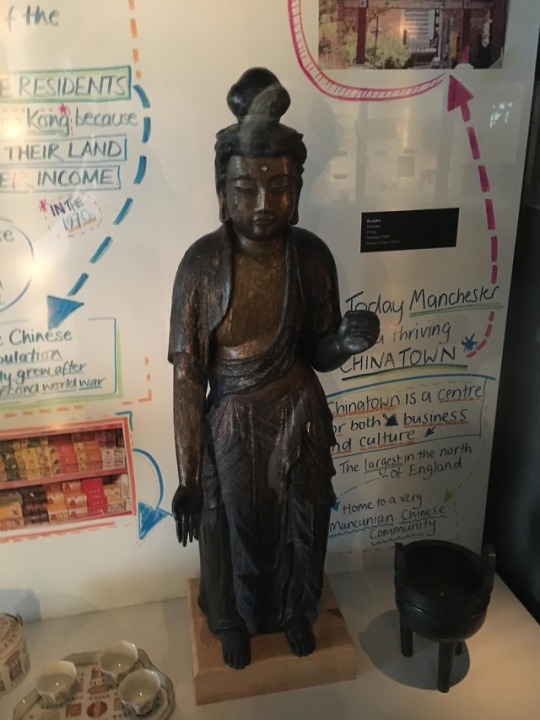



I took a trip to the Manchester Museum (6/4/18) and found a display cabinet full of artefacts related to the Chinese Community in Manchester as part of the museum’s ‘Journeys’ exhibit!
Museums offer exhibitions and displays which I see as a form of ‘publically accessible archive’ that offer a concise glimpse into a specific area of history. The selection that a museum chooses to display can influence and shape public understanding of a subject. For example, all of the objects housed within this case (Buddha, 1934; Manchu Head-dress, 1939; Tea set, 1936; Tripod Pot; No date) all originate from the country of China, as opposed to Manchester’s Chinatown.
The display acts as a lovely recognition of the Chinese community in Manchester, but I feel that it lacks the true celebration of the intertwining of cultures that the heavy immigration at the tail end of the millenium brought, and instead favours a display that attracts viewers to pretty and exotic artefacts from faraway China.
This is an somewhat informative little archive, and gives a clear impression of the journey that many people took from a Chinese homeland to come and live in the UK. I would have liked to see more visual aids that illustrated the emergence and growth of the Chinese population, and the businesses that lead to the creation of North England’s largest Chinatown that the information calls attention, but I will just have to continue my search!
All images and materials are property of Manchester Museum.
#university#comm1850#photographic histories#manchester#manchester chinatown#chinatown#photography#museum#manchester museum#uni project#china#photography archive
0 notes
Text
Research Poster

An intial summary of my Photographic Histories research project idea
#university#Leeds university#comm1850#comm1850 research project#photographic histories#manchester#manchester china town
0 notes
Photo




Non-European Photographers
It has come to my attention on numerous occasions so far during my Photographic Histories module that the majority of the photography is comprised of middle-class, white, middle-aged men.
I had a look at a number of noteworthy photographers that don’t fit that bill and found myself questioning why their amazing work was/is not more appreciated by history.
#university#studyblr#comm1850#photographic histories#cool photographers#ethnic photographers#photography#really cool
0 notes
Photo



Research Project Idea: Manchester’s China Town, looking at what life was like for the growing East Asian population in Manchester at the end of the 20th Century (?)
(my photos from Manchester’s Chinese New Year parade)
#university#Leeds university#comm1850#photographic histories#comm1850 research project#manchester#china town#manchester china town
0 notes
Photo



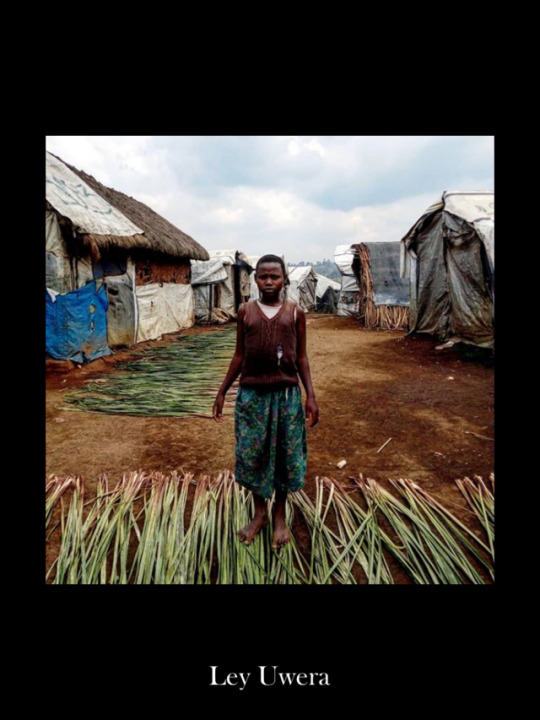
African Photographers
It has come to my attention on numerous occasions so far during my Photographic Histories module that the majority of the photography is comprised of middle-class, white, middle-aged men.
I had a look at a number of noteworthy photographers that don’t fit that bill and found myself questioning why their amazing work was not more appreciated by history.
Looking for African photographers proved to be a challenge as there are such limited historical materials from African photographers. This speaks to how maraginalised ethinic identities have been from instituionalised archives and history making, and also highlights the importance of the now widely accessible digital archives that marginalised identities can create for themselves.
Photographs from: https://trueafrica.co/lists/20-african-photographers-to-look-out-for-in-2017/ and https://matadornetwork.com/read/14-women-shattering-stereotypes-africa-one-photo-time/
#university#comm1850#photographic histories#cool photographers#african photographers#justin dingwall#farida hamak#sara waisa#ley uwera
0 notes
Photo


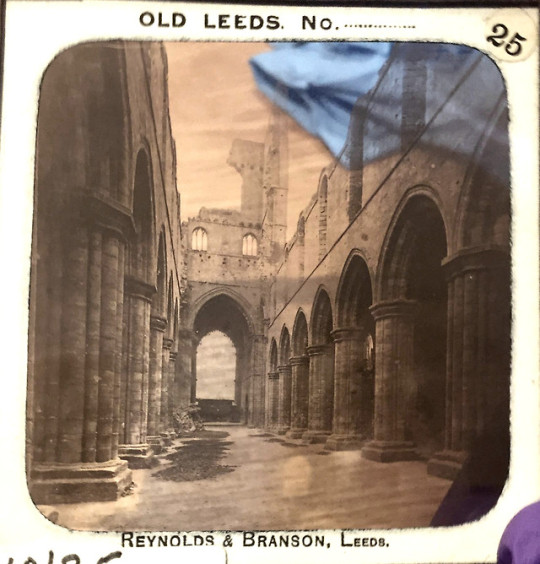

new and old
Photos taken by me at Kirkstall Abbey in November last year vs. photographic slides by Reynolds & Branson from the early 20th century
(slides from Leeds University Library special collections archive)
#university#leeds#kirkstall abbey#photography#old photo#photography archive#comm 1850#photographic histories
2 notes
·
View notes
Photo







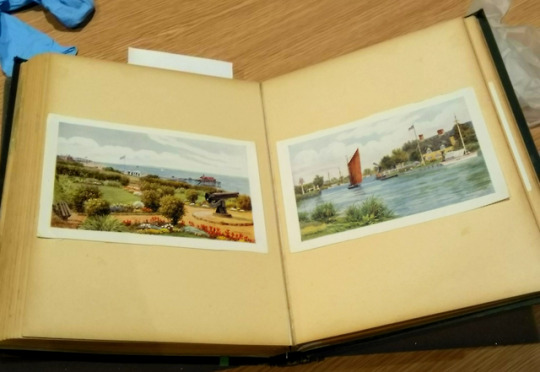
a hands on look at the leeds university special collections archive - it really is an entirely wholly different experience to physically hold an artefact and not just look at it on a screen
side note: wearing rubber gloves for too long can get extREMELY sweaty
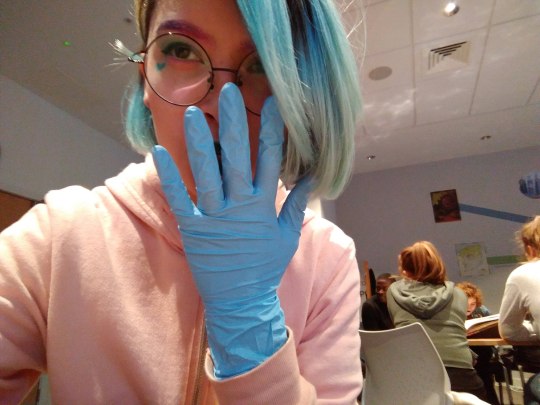
#university#comm 1850#photographic histories#leeds university#archive material belongs to Leeds University Library#photograph#old photo#leeds#the cottingley fairies
2 notes
·
View notes
Photo


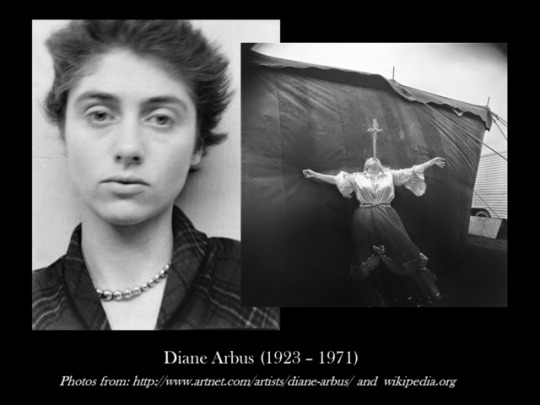

Female Photographers
It has come to my attention on numerous occasions so far during my Photographic Histories module that the majority of the photography is comprised of middle-class, white, middle-aged men.
I had a look at a number of noteworthy photographers that don’t fit that bill and found myself questioning why their amazing work was not more appreciated by history.
#university#comm1850#photographic histories#cool photographers#female photographers#dorothea lange#diane arbus#sally mann#cindy sherman
0 notes
Photo
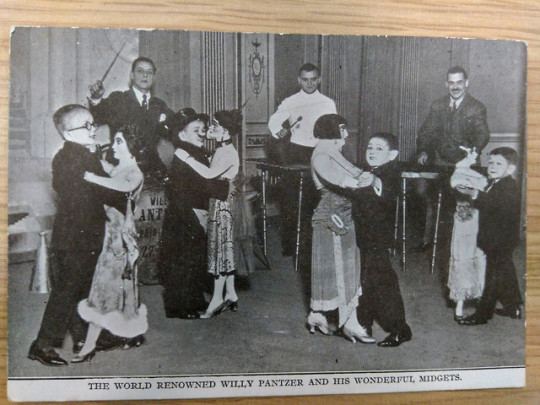
“THE WORLD RENOWNED WILLY PANTZER AND HIS WONDERFUL MIDGETS.”
In seminar we were given a handful of similar postcards to chose from and write a response to and publish onto blogs. It definitely makes a striking start to my blog to begin by posting such a potentially controversial image, but I will strive to handle the subject matter with delicacy and respect.
1. Consider the human subject(s) of the photograph. Start with a simple description, and then move into an account in which you take up the position of the subject... To bring out feelings associated with the photograph, you may visualise yourself as the subject as s/he was at that moment, in the picture: this can be done in turn with all of the photograph’s human subjects....
This postcard is from circa. mid-1930s and shows a troupe of “midgets” (a term used historically to describe persons of short stature, often referring to someone with dwarfism) costumed in suits and dress shoes, dancing with mannequins made to match their height, with three other men of regular height performing music behind them, one of them presumably being the ‘Willy Pantzer’ referred to in the caption.
The photographs contains several subjects: the four performers (and their inanimate dancing partners) and the three musicians. What should be immediately noticable to any viewers is that each of “wonderful midgets” wears a smile on his face, looking happy. This was a troubling era in history when circus ‘freak shows’ were a common form of entertainment, and many people who had abnormalities in their appearance found themselves being degraded to mere objects of entertainment. It was true that many performers of this nature did so voluntarily, and circus troupes would often refer to themselves as being a ‘family’, happily performing for audiences and benifitting from this. But no matter how comfortable someone with a non-standard appearance was with being in this world of vaudeville entertainment, this does not change that the people in these photographs were real people who were systematically exploited and reduced simply to a source of amusement (both within their contemporary period and, arguably, by those who look back at this history and see these people simply within a ‘freak show’ context).
The little people in the photograph, as they would be referred to today, are quite undeniably being ridiculed for their stature. When I personally consider what these men were feeling at the time, I consider that they would have likely felt degraded and humiliated, made to be dressed up like toys and dance to be laughed at and used for money. Perhaps this particular troupe enjoyed their work, I couldn’t ever say for sure, but I think it’s important to consider that many other people from similar experiences did feel this way, because these were real human beings, and not simply a sideshow act devoid of humanity.
2. Consider the photograph’s context of production. Where, when, how, by whom and why was the photograph taken?
The postcard did not include an exact loction for where the photograph was taken but I was able to do a little bit of research into "The World renowned Willy Pantzer and his wonderful midgets". Brian Chatters’ book Kate Chatters, the Great Selbinis, and Lalla Selbini explores a short biography of Willy Pantzer, which describes how he came to be billed as title printed on the postcard when he and his troupes worked in England. I discovered a very similar postcard for sale on Ebay, featuring Willy Pantzer with his perfomers dancing with miniature mannequins. This postcard is labelled in pencil “Yarmouth Hippodrome, 1934 season”, and while this may not be the exact same time and location as the other postcard, it helps to give an approximation for the year it was taken and the type of venue it was taken in. The photograph was presumably taken by a professional photographer (by this stage in history, commercial cameras had been developing for a hundred years, and so the photo could have been taken on any number of film cameras available on the market) for the express purpose of being transformed into a marketable good like a postcard souvenir.

3. Consider the context in which an image of this sort would have been made. What photographic techniques were used? What are the aesthetics of the image? Does it conform to certain photographic conventions?
In my opinion the photographer seems to have taken the picture with the knowledge that its intended purpose is to be used as a postcard. The photo is taken with a horizontal composition, framed so that all of the subjects fit within the dimensions of a postcard, and in level with the eye-line of the men in the background, a factor that serves to emphasise the height of the performers in front. Aesthetically, this photo seems to be very considered but not to the extent that the subjects are posed in a group photo all looking into the camera. The three men in the background seem to be intentionally placed in the composition to fill the gaps between the four performers in front, creating an organised and uncluttered image, but one that still manages to capture the impression of movement and dance through how the performers have been positioned.
4. Consider the photograph’s currency in its context or contexts of reception. Who or what was the photograph made for? Who has it now, and where is it kept? Who saw it then, and who sees it now?
When this photograph was originally produced, it was sold as a piece of vaudeville memorabilia: a souvenir for audiences to remember their novelty experience watching the troupe. The intended purpose of a postcard of course is for it to be sent to someone in the post, and so perhaps the Willy Pantzer company were suggesting that audiences send the postcard to friends and family in order to encourage them to watch the performance.
I have gathered from the amount of similar postcards I have found being sold online that these postcards have found value as collectors items for those who are interested in vintage circus goods, and would presumably be kept in these collectors’ personal archives.
Interestingly when I first began my online research into this photograph, I was able to find an image of the exact same postcard that somebody had posted on Flickr.

The simple fact that a copy of this image has been made available online by somebody means that anybody could potentially access this digital version of the photograph. What I found so fascinating about this particular example is that it seems a current living relative of Willy Pantzer discovered this copy of the photograph, resulting in a very informative comments thread that I think is worth a read! In academic circles, this photograph serves as an artefact to source information from about circus performers in the 1930s, and for this apparent relative, the photographic provided a means of connection to a personal family history, helping to return a human story to this striking photograph.
(Annette Kuhn. 2002. Family secrets: Acts of memory and imagination. London: Verso.)
#lirios uni work#university#comm1850#photographic histories#circus troupe#tw: ableism#tw: ableist language
0 notes